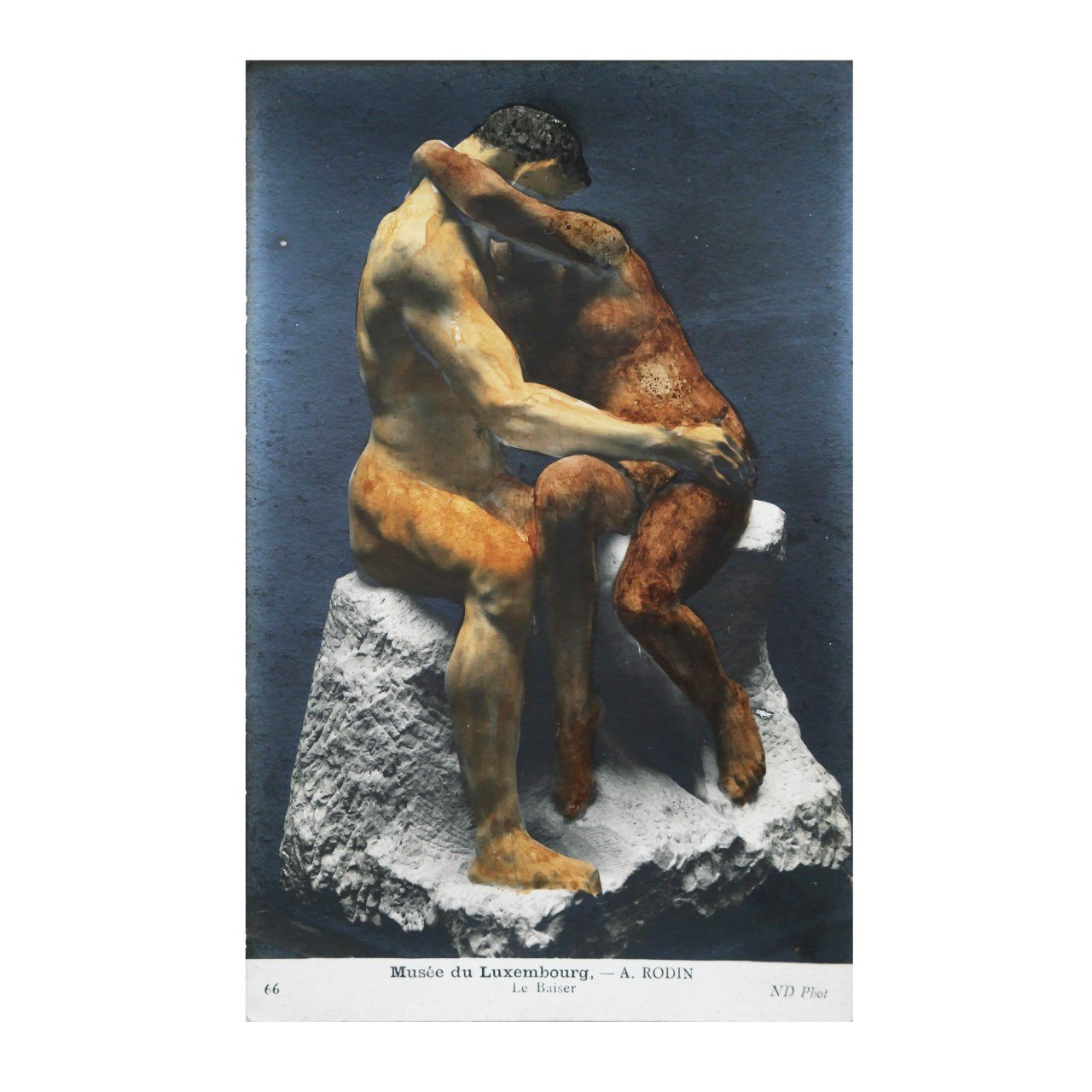The Inside Job
Love and Loss the third Inside Job staff exhibition. This time the curators are; Jasmine Kee, Lou Montignac, Cristina Petrella, Kenneth Price, and Andrew Wyatt.
The location of the show is: Tate Exchange, Level 5 Blavatnik Building, Tate Modern. On Thursday 17th, Fri 18th, Sat 19th, sun 20th, Mon 21st Tues 22nd and Wed 23rd.
The Inside Job exhibition will be open to the public between 12 to 6pm.
Le Document was lucky enough to get a sneak preview at some of the work going on display. Here are a few of our favourites ...
Above: Soldier by Barry Thompson who worked in the bookshop at both Tate Britain and Tate Modern. Barry drew this in 2013, it’s 10.4 x 14 inches. Barry earned an MA from The Royal College of Art and a BA from the University of East London. He had solo shows at Peer, Rachmaninoff’s and The Charlie Smith Gallery. His work also appeared in group shows at Cell Project Space and New Art Gallery. He was also the 6th recipient of the £10,000 Jessica Wilkes Award. Barry died in the Summer of last year but his memory lives on. Read Harry Pye’s interview with Barry: here
Above: What was once a blossoming romance (tear drop petals), 2022 by Erin Cork.
This work explores the symbolism of flowers in love and loss. The petals are taken from a bouquet of flowers I was sent as a romantic gesture by my lover. Just a few weeks later he ended the relationship. Pressed and arranged on the paper, the petals now have a closer resemblance to tear drops than flowers.
Above: Silhouettes 2022 by Helen Smith
“Feather of lead, bright smoke, cold fire, sick health, Still waking sleep, that is not what it is! This love feel I, that feel no love in this.”
The mirror and the shadow: flipped, inside-out, inverted, overturned, upended. We fall between past and present, caught between presence and absence. Doubling, we are bound to one another, situated opposite and across from each other. Corresponding yet opposing.
Above: By Ted Brunning. This is one of three Psych Sculpt sculptures Ted has made that explore a love and loss of culture through the absence of sound.
Ted Brunning is a Musician and Sound/Visual Artist. He has a BA in Sound Arts and Design from UAL and an Mmus in Sonic Arts from Goldsmiths. He makes music under the pseudonym Evil Data Religion. He currently works from his studio in London and works part time at Tate Britain as a Visitor Engagement Assistant.
Websites:
www.boxfuss.co.uk
www.evildatareligion.co.uk
Instagram:
@modexist
@evildatareligion
Above: A sculpture by Natasha Vassiliou entitled, She carries her whole world (2009)
Media: Mixed media. Porcelain and other mixed media.
Dimensions / Time: 14.5cm x 9cm x 8cm
"This work explores the idea of (a suggested narrative through presenting) a figure via fragmented pieces of porcelain and other materials, reconstructed to create a ‘new form’. This form was created by seeking out second hand figurines and reconstructing them to create this ‘new form’…
Haunted by our memories and experiences we carry fragments with us everywhere.
Love and loss can be both delicate and harsh at the same time. We always carry them together in pockets and fragments – emotionally and physically.
She (the form) is the embodiment of just that. She is carrying her precious memories as fragments on her broken body.
I believe we try to hold onto loss and broken memories as a form of survival and strength. We try to hold on to the love even though fragments of pain will always haunt the memories.
With love eventually comes loss and pain. The body and the mind always remembers. Those experiences and memories get embedded and intertwined into an ever moving web in our mind and our body. They form their own reality or truth in the end. This is her truth, her love, her pain, her memory and her survival."
Above: Warm Love and the artist is Raksha Patel.
Raksha says: "The painting explores the traditions of sculpture, the translucent nature and purity of marble in relation to the ideals of perfection and of whiteness. Marble statues used to be painted. Bodies were depicted with a range of skin tones, however over time the paint diminished or was scrubbed away like dirt, removing the identities and heritages of the people sculpted. By hand tinting this well known image of The Kiss, the work begins to explore the qualities of flesh, its warmth, skin tones and supposedly 'flawed' bodies. Mixed race relationships are often seen to be in the minority or a phenomena of contemporary times, a result of the so called 'melting pot' that we live in, however this disregards the global movement of people over the centuries and how we do not necessarily choose who we fall in love with." www.rakshapatel.co.uk









